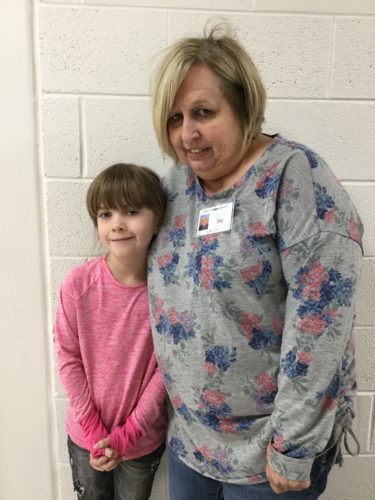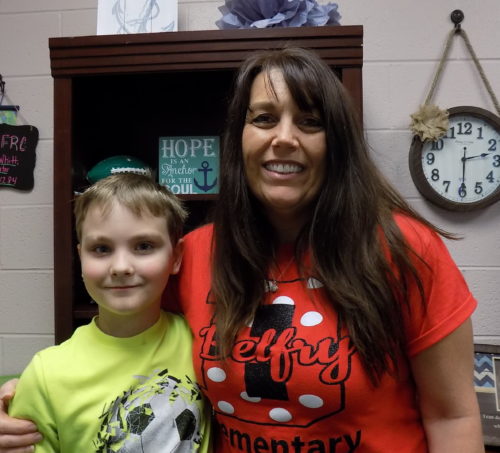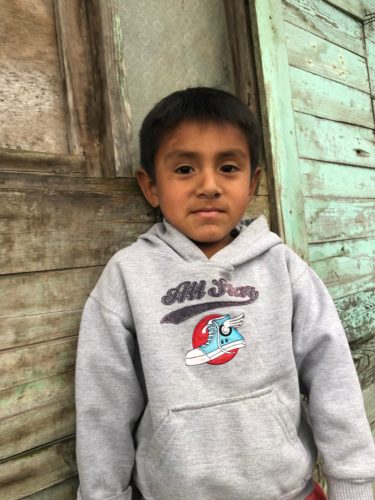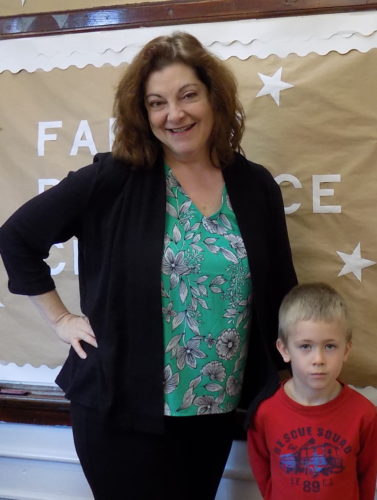At Children Incorporated, we know very well that we couldn’t help kids who are living in poverty to obtain an education without our amazing volunteer coordinators. Because of their hard work and dedication, we are able to provide basic needs to some of the most vulnerable children in the world.
This past June, one of our special volunteer coordinators, Leeann, at our affiliated project Millard Elementary School in Pike County, Kentucky, retired after 25 years of working at the school’s Family Resource Center. In a community where many children are in the foster care system because they have been removed from their homes due to their parents’ drug abuse problems, having a special person like Leeann who can offer consistent support for kids is incredibly important to their well-being and development.
CATCHING UP WITH LEEANN
We caught up with Leeann to ask her some questions about her more than two decades of work with Children Incorporated, and how our program has impacted the lives of children at her school.
CI: How long have you been working as a volunteer coordinator with Children Incorporated?
L: 25 years
CI: What special challenges do children at your school face?

Leeann with one of our sponsored children at Millard Elementary School in Pike County, Kentucky
L: The greatest need at the school is for school supplies and clothing for the students. I would say that more than forty percent of our students are in foster care, living with other family members, and/or are adopted at some time in their lives. Many of these students have low self-esteem and sometimes make bad decisions because they don’t have any guidance in their lives.
CI: How would you describe the community in which you live?
L: There are no jobs in this community. With the decline of coal mines, there are no jobs for the men.
CI: In what ways does the Children Incorporated program help the children enrolled?
L: It helps with the purchase of school supplies throughout the school year. Also, it helps to purchase new shoes and clothing when they are needed. Students visit the Family Resource and Youth Services Center (FRYSC) when they have a need.
CI: For you, what is the most important aspect of the Children Incorporated program?
L: The children enrolled in the Children Incorporated program are set up to succeed in school through the basic needs they are receiving. The sponsorship program also helps build their self-esteem and gives them the feeling that they are being treated with respect.
“The sponsorship program also helps build their self-esteem and gives them the feeling that they are being treated with respect.”
– Leeann
CI: Can you tell us a special story about a sponsored child and how sponsorship helped them in their life?
L: I have a girl that has been in the Children Incorporated program for five years. I will call the girl Alica. Alica has one brother and one sister. Her father worked in coal mines for twenty years – but now, he works at McDonald’s. They barely make it every month after paying rent and utilities. They do receive a small amount of food stamps. Alica had been wearing the same pair of sneakers for three years when I first met her; of course, her feet had sores on them, and she said it was hard to walk in the shoes. I asked her why she hadn’t told her parents about her feet, and she said that they were still pretty good shoes. She didn’t want to hurt her parents’ feelings or make them feel bad. The first thing I did after that conversation was go and get her two new pairs of shoes.
CI: What is most challenging for you as a volunteer coordinator for Children Incorporated?
L: Christmas shopping is the hardest because I wish there was enough money to provide for entire families.
CI: What do you enjoy doing in your spare time?
L: I love to read, make wreaths, and watch TV movies from start to finish.
Leeann, thank you for your years of dedicated service to children in need in Eastern Kentucky. We hope you enjoy your much-deserved retirement!
***
HOW DO I SPONSOR A CHILD IN KENTUCKY?
You can sponsor a child in Kentucky in one of two ways: call our office at 1-800-538-5381 and speak with one of our staff members, or email us at sponsorship@children-inc.org.




 Facts about poverty in Peru
Facts about poverty in Peru